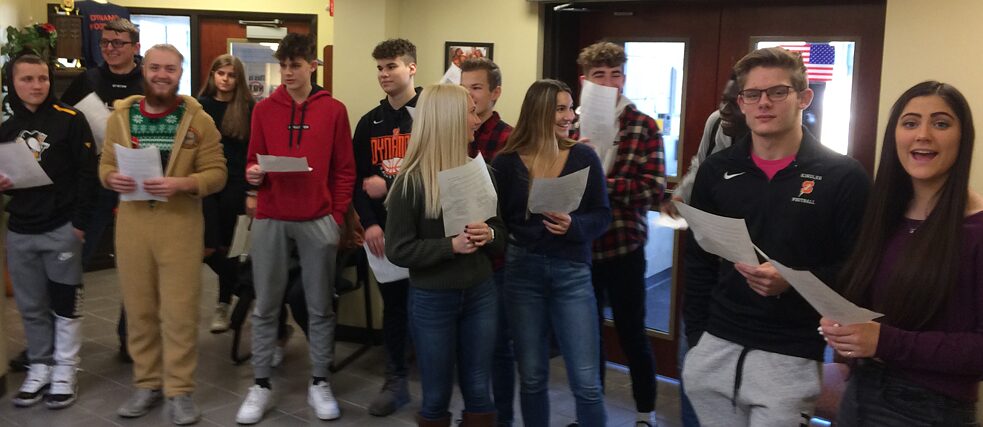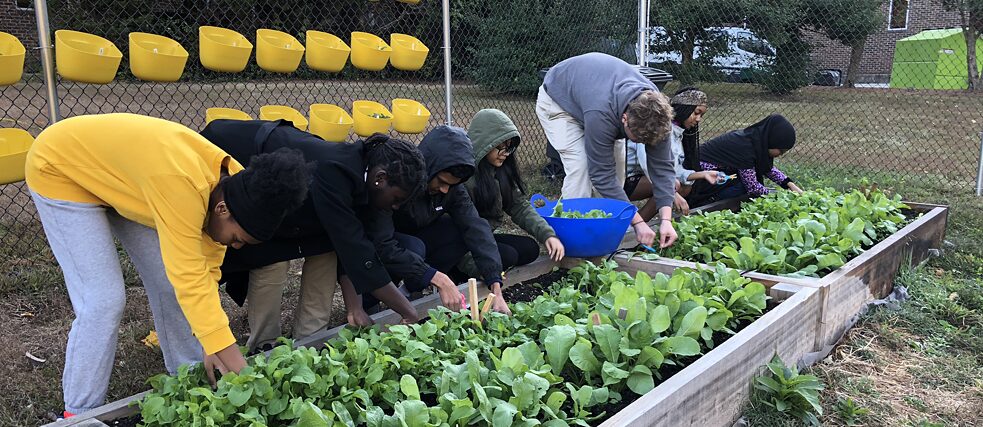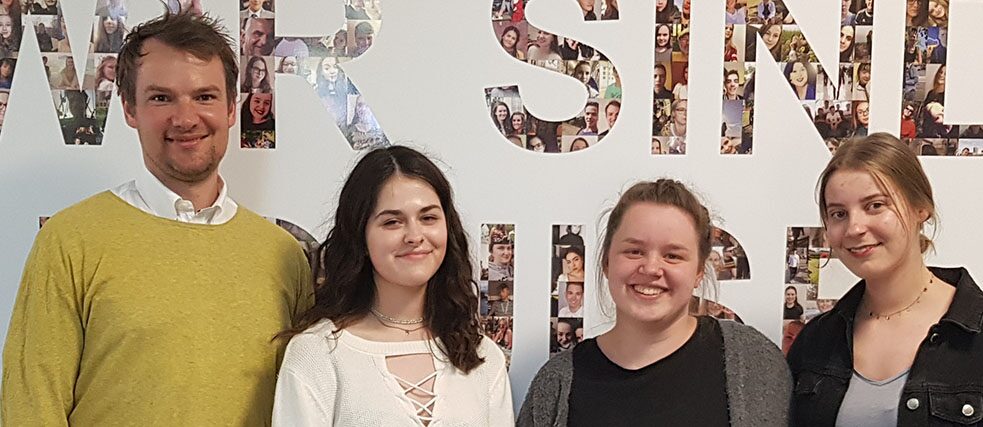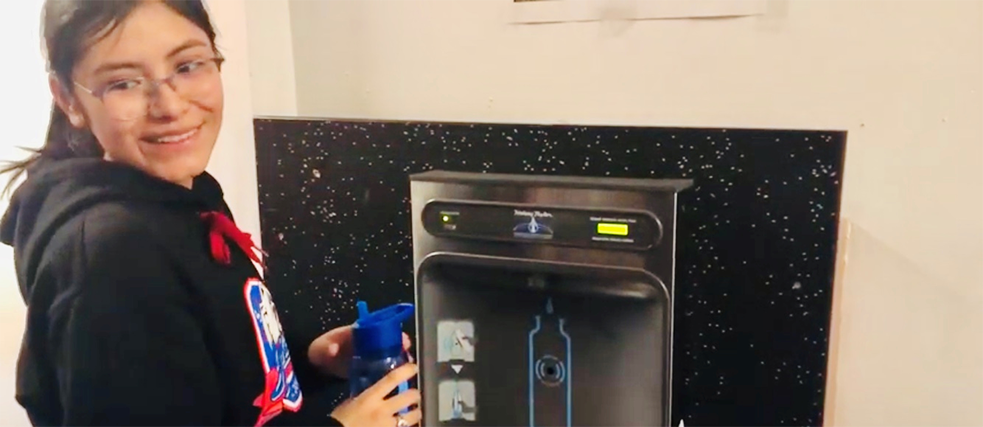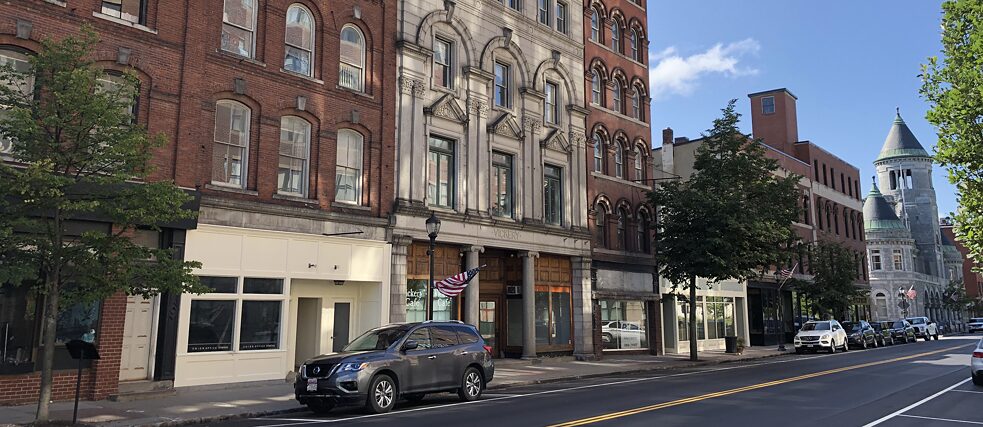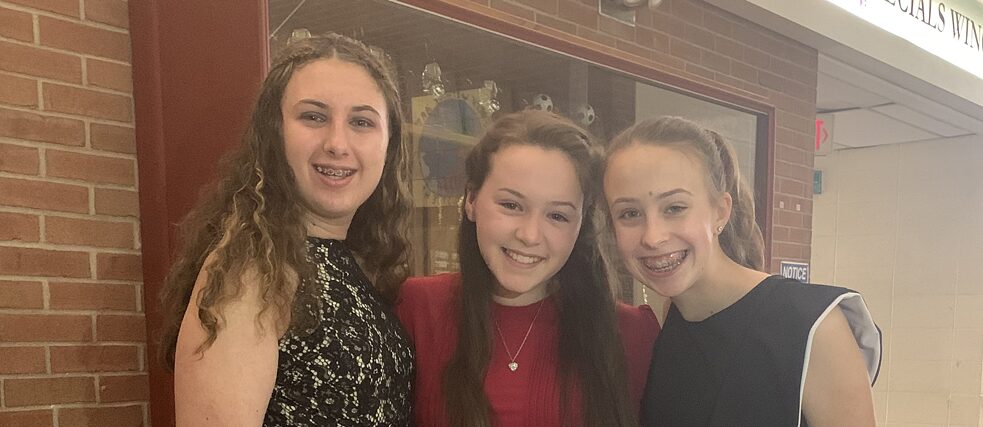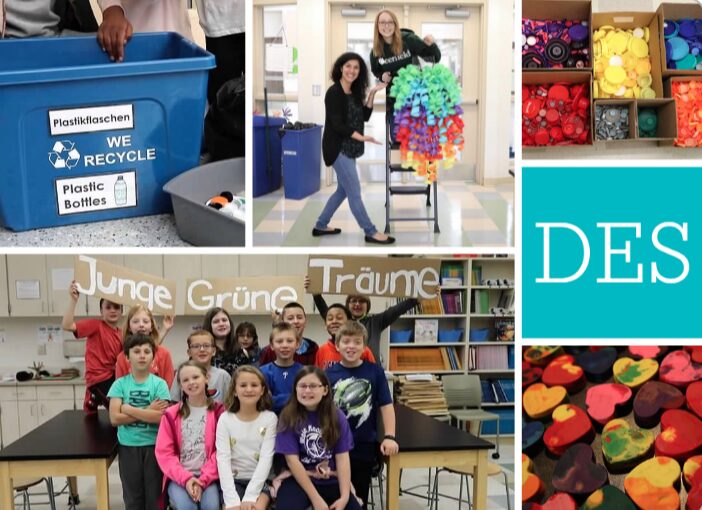2019/2020 Winning Teams
Springdale Jr./Sr. High School (USA): Improving Our Community's Indoor Air Quality
There are two power plants and several industries in the Allegheny Valley School District and air pollution related illnesses are a serious concern among the students at Springdale High School. German 3 and 4 students used Speck air quality monitors to test the effectiveness of low-cost air filters. Then the students spoke with low-income and elderly community members about how they could build their own inexpensive air filters to significantly reduce particulates in the homes.
Louise-Henriette-Gymnasium Oranienburg (DE) & Odyssey Charter School (USA): Going Green Together- A US-German Sustainability Project
Students from Odyssey High School and Louise-Henriette Gymnasium raise awareness of the vast amounts of plastic used every day. Our joint idea was to act by avoiding plastic for one day. Students produced videos of their efforts to live more sustainably. The blog was then used to find out more how students from both sides of the “pond” tackle this issue and to enhance intercultural learning.
Gymnasium Nr. 32, Kaliningrad (Russland): Bäume brauchen unsere Hilfe
Kaliningrad is among Europe’s greenest cities. In recent years at the beginning of summer, however, the leaves of the city chestnuts are increasingly covered with yellow spots. The leaves turn yellow, wilt and then fall off, because they are infested by the chestnut leaf-miner. The loss of foliage not only worsens the beautiful townscape, but also decreases the oxygen saturation of the air. Chestnut trees, together with lime trees, are Kaliningrad's "green lungs." They are our protective shield against exhaust fumes and dust.The problem of protecting the horse chestnut from the chestnut leaf-miner is currently relevant for almost all countries in Europe and Western Russia. Therefore, our project deals with the question of how to protect urban chestnut trees against the chestnut leaf-miner in an environmentally friendly way. As a first step, we therefore plan a theoretical analysis and a one-year experiment to protect a selected chestnut tree near school. For this tree, we will develop a program to control the chestnut leaf-miner on this tree. In a second phase, pheromone traps and birdhouses will be used to reduce both the reproductive rate of male moths and the new moth population. By publishing our concern and the progress of the project in our school newspaper, we will the raise awareness within our school community and among our parents, hoping for active support from our community.
Oberstufenschule Nr. 3 der UAEH, Pachuca (Mexiko): ECO P3
As students of High School No. 3 of the University Autonoma in Pachuca, Hidalgo State, Mexico, we are concerned about the use of resources in our school and in our city. We see and feel the global environmental crisis every day: In reckless behavior, in the inadequate infrastructure and in the serious consequences that follow. Knowledge, consideration, and infrastructural green options are missing in our school as well as in our surroundings. Therefore, with our project we want to raise environmental awareness and establish environmentally friendly practices. Starting with a school garden and new green spaces to renewable energy production, we will gradually implement improvements in everyday life and in our school and city.Douglas High School (USA): Beyond Recycling
Our project “Beyond Recycling“ focuses on reducing single use items and provides students with the opportunity to engage in sustainable stewardship, community and social development as well as develop healthy lifestyle choices and promotes academic achievement. Our research question is: Does waste reduction and awareness of sustainable practices contribute to the welfare and well-being of individuals, groups, and communities by conserving resources and instilling the mind sets required to put communities and environs ahead of self? In this project, we envision a community-wide approach to sustainability that includes, but goes beyond recycling.Volkswagen Institut für Ausbildung und Entwicklung, Puebla (Mexiko): Wir wollen nicht töten, was uns Leben gibt
In our school, students use a high amount of synthetic polymers every day. Our goal is to make people aware of the consumption of synthetic polymers and to eliminate the use of plastics. We seek to promote the use of reusable materials.Most people use plastic in excessive quantities at school. Due to unnecessary purchases at nearby stores, we throw away plastic waste. Plastic waste goes to a dump near our school increasing the amount of pollution. During our investigation of the waste, we realized that 60% is made up of plastic bottles, 35% is made up of plastic containers, and 5% organic waste.
We seek to develop workshops focused on addressing these topics. Additionally we will analyze the garbage generated in the community to measure the progress of our project and identify the behavior of the problem. We will implement rules in our institution by not allowing the use of unicel, glasses or disposable cutlery. We will motivate students to use reusable goods and bottles, as well as encourage all students to use recycled paper. We will make a request to the school cafeteria for economical fruit sales.
In the future, we aim to expand our project to other Volkswagen Language Centres as well as other academic institutions.
Union Square Academy for Health Sciences (USA): Improving Students' Access to Clean Water in NYC Schools
Oberschule Findorff Bremen (DE): Nachhaltig streichen
In our school it is often the case that students paint their own classrooms, which our class also planned to do. On the search for paint, we were met with a variety of paint options from biologically produced to conventional synthetic paints. Through our research it became clear that in addition to cost being a deciding factor in selecting paint, other criteria should also play a role, such as sustainable production. In this project, we investigate different paint pigments. We analyze the health and environmental impacts of production of paint, its use and its disposal. With our project, we hope to inform our fellow students about the environmental compatibility of different paints.Cony High School (USA): Discrimination Against Immigration, Keine Diskriminierung bei Migration
Schweizerschule Mexiko Campus Cuernavaca (Mexiko): Der Fall der grauen Mauer
The problems that need to be solved are the inefficient use and management of energy and space within our school community, decreasing childhood obesity, and addressing the stress caused by the high performing school environment. The main project is to transform a gray wall into a green wall which will provide the community with fruits and vegetables, as well as more clean oxygen.The right fruits and vegetables can be consumed internally. A very important aspect of the project will be supplying water for the irrigation of the walls, for which we have two proposals:
A) Rainwater storage system.
B) Adapted shuttle wheels to drive the water pumps to water the wall.
The inclusion of at least one hour of "spinning" in the regular physical training program of the students to pump the water ensures maximum use of this system: health protection, environmental protection and energy saving.
An important point is also decreasing the high level of stress among students by creating green spaces that improve the view which, according to studies, promotes a sense of calm and concentration.
Claremont High School (USA): One World, Eine Welt
Our project focused on finding ways to make every single one of our German club events sustainable in some way, by using resources responsibly and reducing waste. We also focused on utilizing more sustainable transportation for events both near and far. When this was not an option, we designed and played sustainability themed games as we traveled to events. Lastly, we made efforts to raise awareness within our school and local community about sustainable event planning through the creation of different materials, including videos, brochures, digital checklists, and flyers.EuropaSchule (Honduras): Unsere Zukunft ernten (Projekt Ernährungssicherheit)
The problem identified in our project is child hunger in public school within our country. We will create experimental centers where students of non-governmental educational institutions in communities with scarce resources can directly participate in agricultural and poultry activities. These products will go to their school cafeterias. Initially, our project will consist of constructing vegetable gardens where the students, together with their teachers, can obtain agricultural skills at the micro level to be able to make the best use of the land. Of course, more than simply the vegetables and bananas produced through this project will be needed to run a cafeteria. Therefore we will also seek monthly sponsors to donate basic grains and dairy products to the student cafeterias. In the long term our project could contribute to solving the large issue of poverty and economic growth through decent work.Ashford School (USA): Can students travel carbon neutral?- Carbon offsetting and saving in our everday lives.
Deerfield Elementary School (USA): Junge Grüne Träume
Every class at our school was inspired to take part. The first graders created a butterfly garden that will be finished this spring. The second graders used old plastic bottles to make beautiful flower art, which double as decoration for the butterfly garden. Some second graders also observe and document the development of the butterflies. The third graders recycled used crayons and melted them into hearts. The fourth graders researched what types of vegetables they could grow locally. The fifth graders learned about the topic “Animals and Their Habitats” and built insect hotels. Sustainability impacts all of us!
